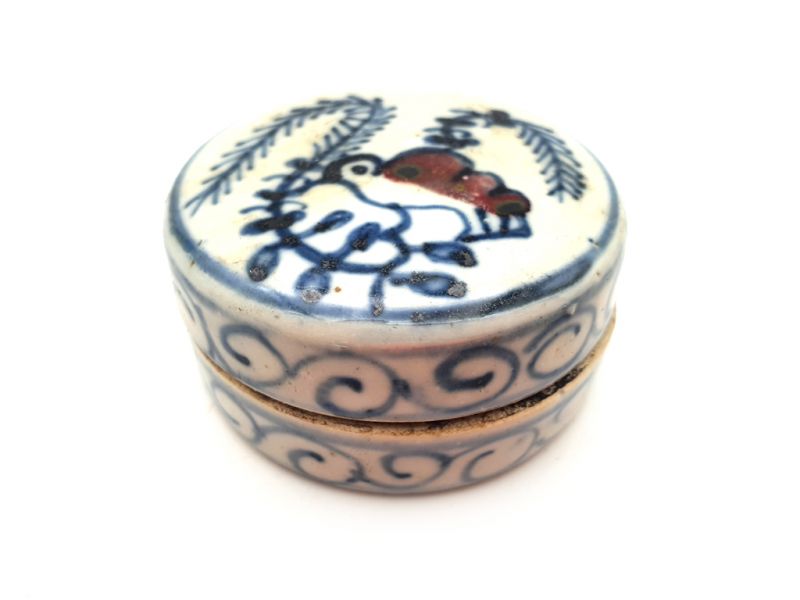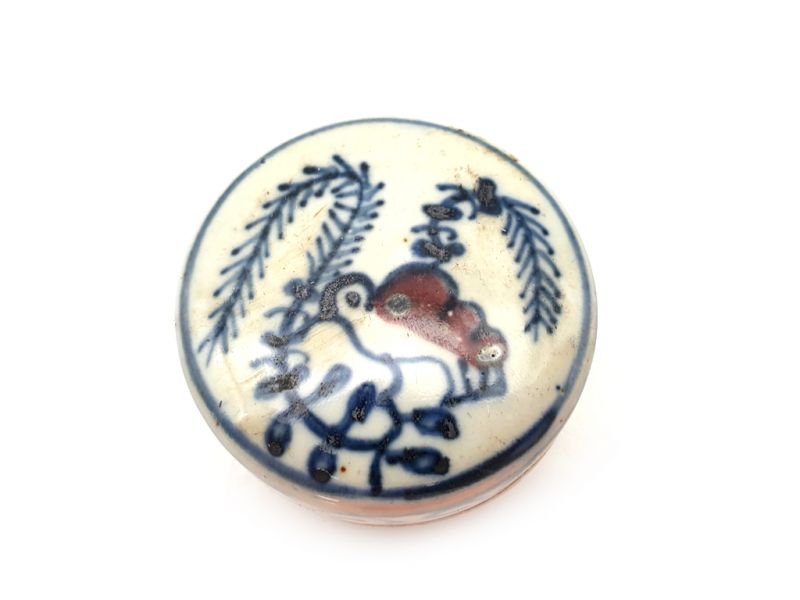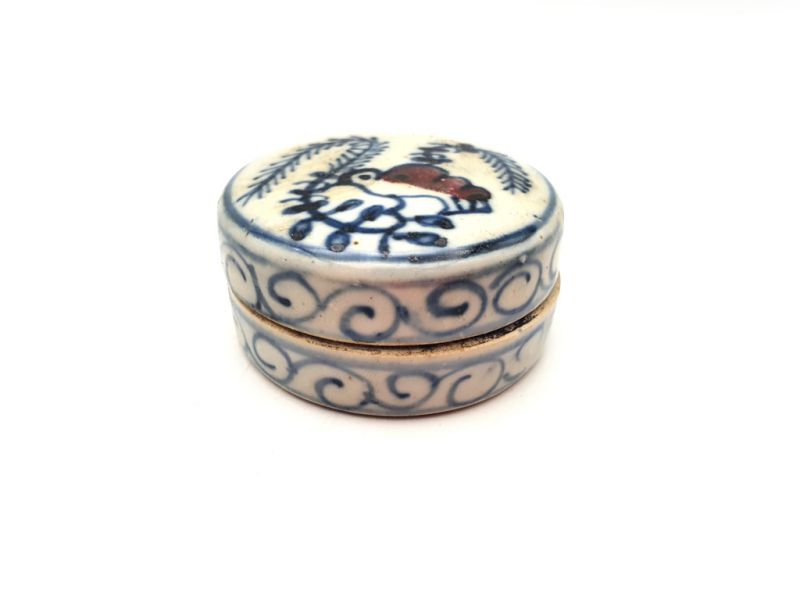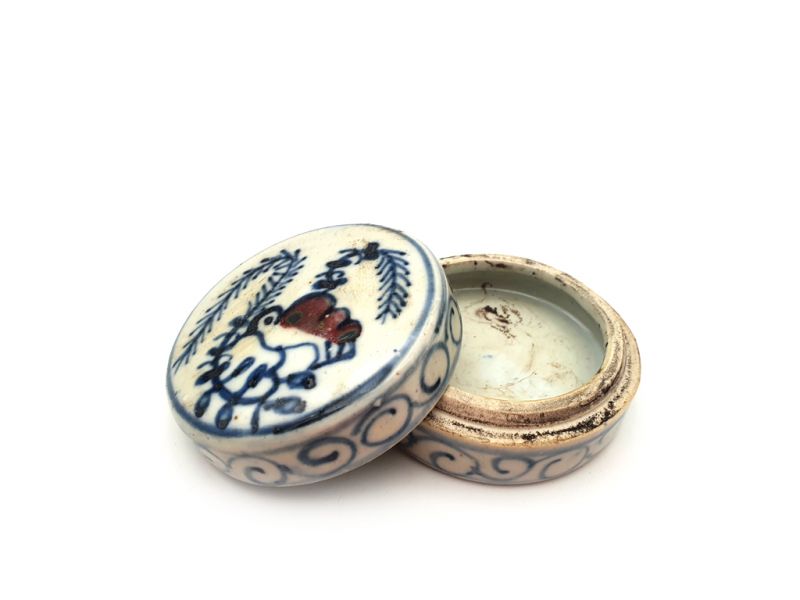Small Chinese porcelain box - Bird
Small Chinese porcelain box:
— This Chinese box is made of hand-painted porcelain and has a unique decoration composed of Chinese motifs. Traditional Chinese porcelain tableware is unique in the world, it is distinguished by the richness of its decorations and its colors. It is a reproduction made entirely by hand by a Chinese craftsman from Guangdong province.
"This is a high quality reproduction. Our goal is to show the general public that it is possible to buy something other than a poor quality reproduction or porcelain from a factory, all at a reasonable price. So you can acquire a porcelain reproduction whose rendering is practically similar to the original, the emotion and the atmosphere created is identical to the original.
— Chinese porcelain objects have met with great success for several centuries, both in Asia and in the rest of the world. Indeed, Chinese porcelain tableware is functional and also has a decorative function. It has long fascinated Europeans due to the mysteries surrounding its manufacture, and some pieces are considered works of art.
— Small Chinese porcelain boxes are traditional decorative items made in China for thousands of years. They are used to store objects or food. Chinese porcelain boxes are usually made of high quality porcelain. They are often decorated with colorful patterns and ornaments, giving them a unique and distinctive look. Chinese porcelain boxes are very practical and come in a variety of sizes and colors.
History of Chinese Porcelain:
— You should know that ceramics is an ancient art in China, rooted in the cultural landscape for thousands of years. It was during the Paleolithic period, 20,000 years ago, in the Yellow River valley and in the Gansu region, that the first ceramics appeared. They were used to cook rice and already had the shape of pots and pots. The hunter-gatherer population of southern China developed the manufacture of ceramic objects after the invention of the slow wheel in the Neolithic period.
— It was under the Tang dynasty, during the Middle Ages, and thanks to trade, that Chinese porcelain was exported, first to the countries of the Middle East, then to European countries (14th century). The royal courts of Europe quickly considered these objects as treasures or oriental artistic works. The best European alchemists have tried for centuries to reproduce Chinese porcelain, without success.
— In China, porcelain was prized by scholars and members of the Imperial Court. Porcelain tableware was then democratized throughout the country, even if its cost made it inaccessible to the poorest populations. The most famous Chinese porcelains are famille verte, famille rose, Qing porcelain, "blanc de Chine" porcelain, Ming porcelain, Yuan porcelain, Qingbai porcelain and Xing porcelain.
— Ancient Chinese porcelain objects are recognizable by the clusters of iron and by the micro-scratches present on their surface, as well as by their specific decorations and the signatures which correspond to well-defined dynasties and periods. The production of traditional Chinese porcelain objects stopped in 1912 with the arrival of mechanization.
— The most sought-after Chinese porcelain objects are vases, plates, bowls, glasses, statues, biscuits, potiches, Fo dogs, balls and jewelry.
















